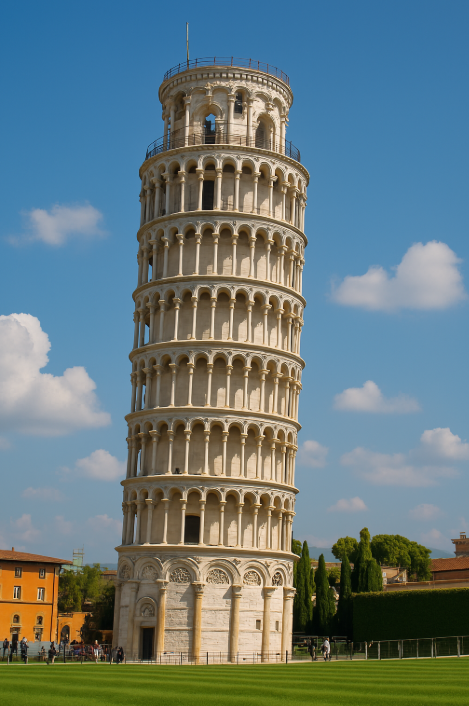
How a medieval construction mistake turned into a world-famous landmark.
The Leaning Tower of Pisa is one of the most recognized landmarks in the world — not because of its height or age, but because it leans. What was once a construction mistake turned into a global attraction, drawing millions of curious visitors every year.
Located in Pisa, Italy, the tower began construction in 1173. It was designed as a freestanding bell tower for the nearby cathedral. Builders had only completed the third floor when they noticed something unusual: the tower was starting to tilt.
The cause? The foundation was built on soft, unstable soil made of clay, fine sand, and shells. The ground couldn’t properly support the weight of the structure, which caused one side to slowly sink. Despite this, construction continued — with long pauses between stages — over nearly 200 years. Each new floor was adjusted slightly to compensate for the tilt, giving the tower a subtle curve.
For centuries, the tower leaned more and more, reaching a dangerous angle of about 5.5 degrees by the late 20th century. Engineers warned that it could eventually collapse. So in the 1990s, a massive stabilization project began. The soil underneath the higher side was carefully removed, allowing the tower to settle back slightly. By 2001, the lean was reduced to about 4 degrees — and the tower was declared stable for at least another 300 years.
Interestingly, the lean of the tower saved it from destruction in World War II. As Allied forces advanced through Italy, they planned to destroy tall structures that could be used by enemy snipers. But the beauty of the tower reportedly stopped them, and it was spared.
Today, the Leaning Tower of Pisa stands as a monument to human error, resilience, and creativity. Its unintended tilt made it famous, and its survival tells a story of how something flawed can still become something extraordinary.